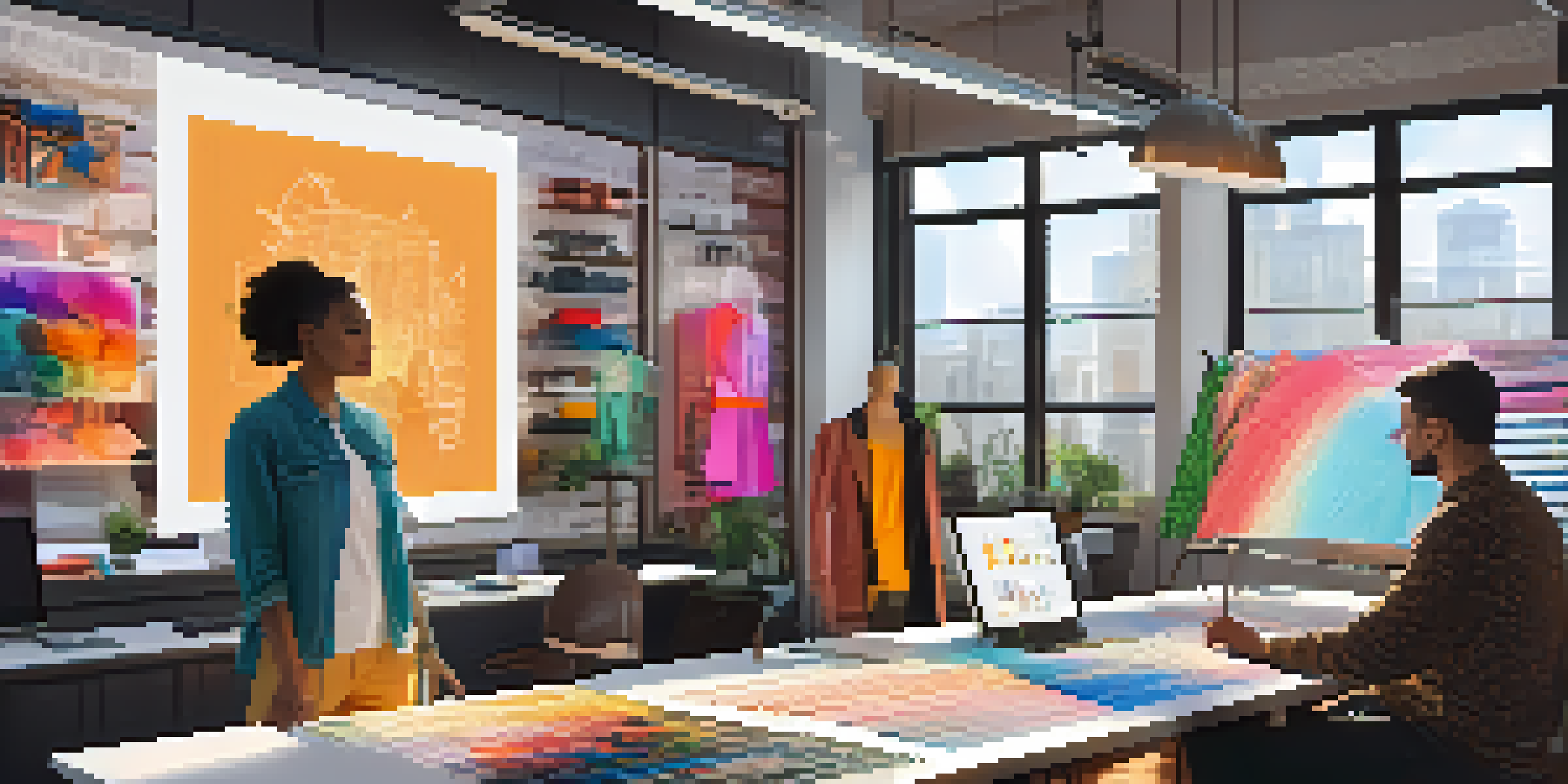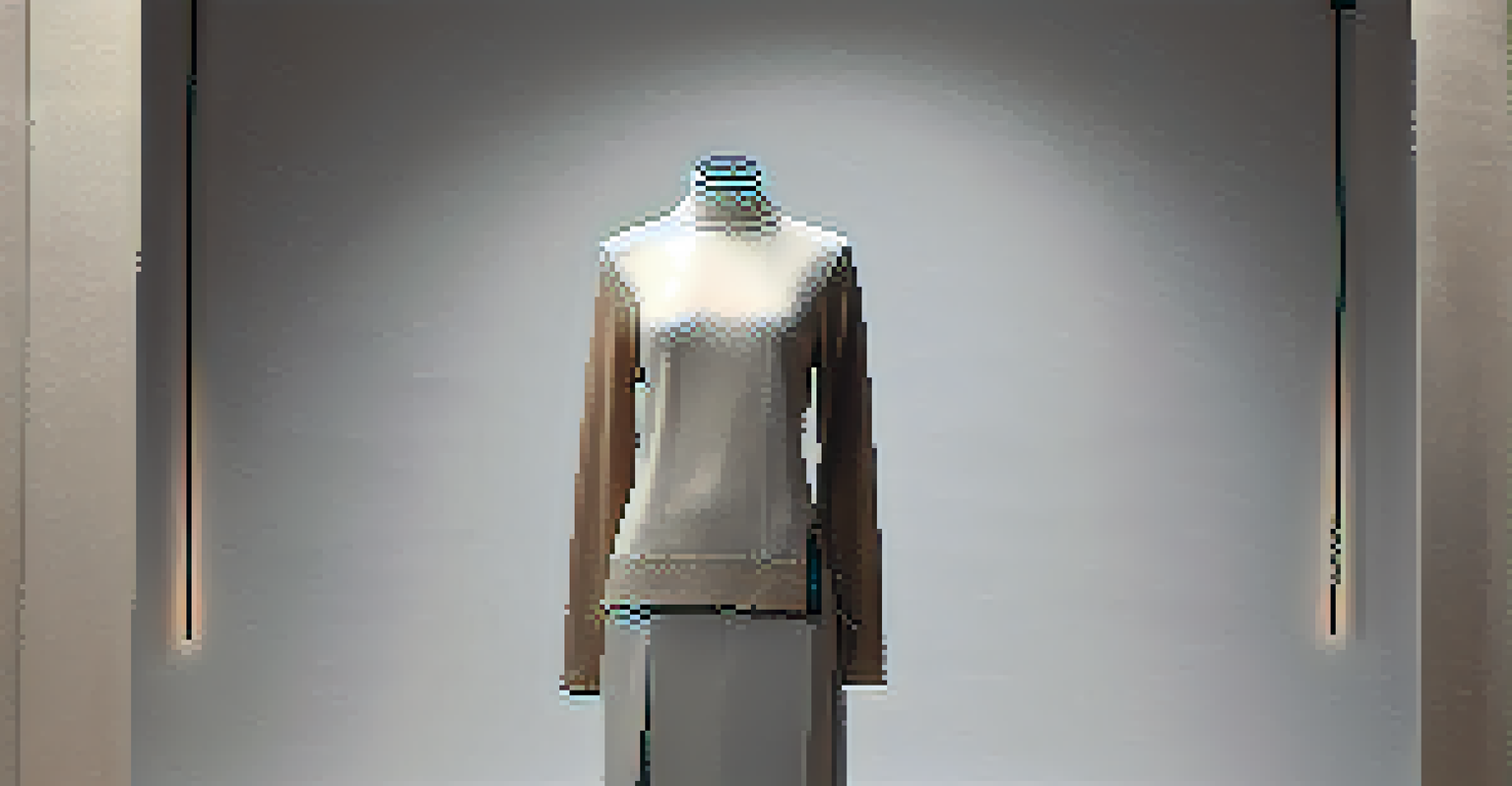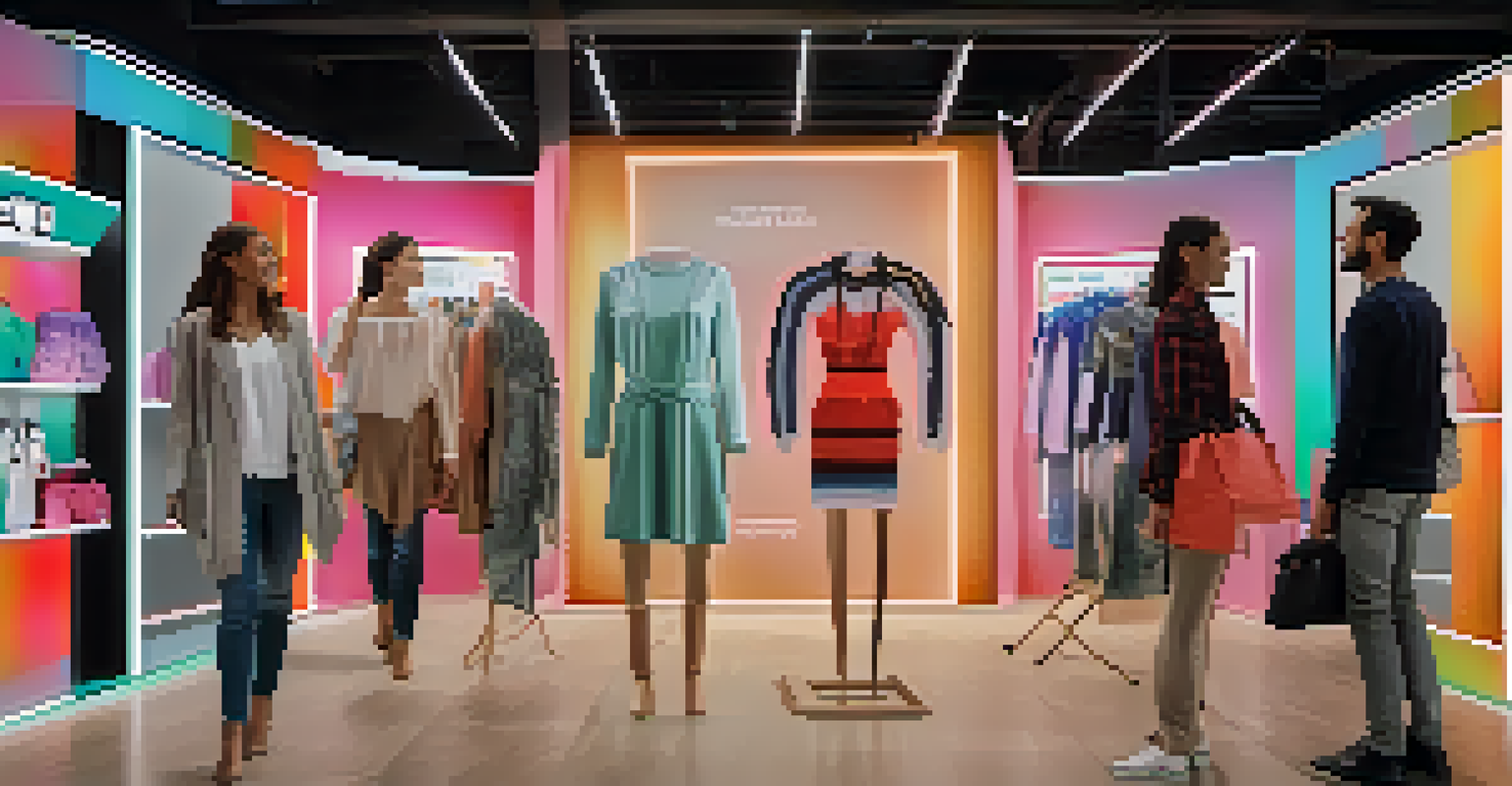Collaborative Design: Bridging the Gap Between Fashion & Tech

Understanding Collaborative Design in Fashion and Tech
Collaborative design is a creative process where various stakeholders come together to innovate. In the context of fashion and tech, it often involves designers, technologists, and consumers working as a team. This synergy not only enhances the product but also ensures that it meets the evolving needs of the market.
Design is not just what it looks like and feels like. Design is how it works.
Imagine a fashion designer brainstorming with a software engineer to create a smart garment. This mixture of expertise leads to innovative products, like clothing that can monitor health metrics. Such collaborations are reshaping how we think about apparel, making it both functional and stylish.
Ultimately, collaborative design bridges the gap between two seemingly different worlds. By merging aesthetics with technology, we can create products that are not just visually appealing but also enhance our daily lives.
Key Benefits of Collaborative Design in the Fashion Industry
One of the primary benefits of collaborative design is the diversity of ideas it brings to the table. When individuals from different backgrounds and skill sets unite, the range of solutions expands significantly. This variety can lead to groundbreaking innovations that might not have been possible in a more siloed approach.

For example, think of how wearable technology like smartwatches evolved. Designers and tech developers worked together to create a device that not only tracks fitness but looks good on the wrist. Such products resonate with consumers who value both function and style, increasing market appeal.
Collaborative Design Drives Innovation
Bringing together diverse stakeholders in fashion and tech fosters groundbreaking products that meet market needs.
Moreover, collaborative efforts can enhance the efficiency of the design process. When teams share insights and feedback, they can identify potential issues early on, streamlining production and reducing costs.
Trends in Fashion-Tech Collaborations
As technology continues to advance, new trends emerge in the realm of fashion-tech collaborations. One notable trend is the rise of sustainable fashion, where designers and technologists come together to create eco-friendly materials and processes. This shift reflects a growing consumer demand for sustainable products.
Innovation is the ability to see change as an opportunity – not a threat.
Additionally, the integration of augmented reality (AR) in fashion showcases another exciting trend. Brands are partnering with tech companies to offer virtual try-ons, making shopping more interactive and personalized. This not only enhances the shopping experience but also reduces the likelihood of returns.
These trends illustrate how collaborative design is not just about blending aesthetics and technology but also about responding to societal needs. As consumers become more eco-conscious and tech-savvy, collaboration will be key to future innovations.
Real-Life Examples of Successful Collaborations
Several brands have successfully harnessed collaborative design to create standout products. A prime example is the collaboration between Adidas and Parley for the Oceans, which turned plastic waste into fashionable footwear. This initiative not only addresses environmental issues but also sets a precedent for future collaborations in fashion.
Another notable example is the partnership between Ralph Lauren and the tech company, which developed a high-tech polo shirt for the U.S. Open. This shirt features built-in sensors that track biometric data, merging luxury fashion with cutting-edge technology seamlessly.
Consumer Input Shapes Products
Engaging consumers in the design process enhances product relevance and builds brand loyalty.
These examples highlight the tremendous potential of collaborative design. When industries join forces, they can create products that are not only innovative but also serve a greater purpose.
Challenges Facing Collaborative Design Initiatives
While collaborative design offers numerous advantages, it also presents certain challenges. For instance, aligning the goals and visions of different stakeholders can be tricky. Designers might prioritize aesthetics, while tech developers focus on functionality, leading to potential conflicts.
Additionally, communication barriers can arise, especially when teams come from diverse backgrounds. It's essential to establish clear channels of communication to ensure everyone is on the same page. Misunderstandings can hinder the creative process and delay project timelines.
Despite these challenges, overcoming them can lead to more robust and innovative outcomes. With a commitment to collaboration and open communication, teams can navigate these hurdles and create exceptional products.
The Role of Consumers in Collaborative Design
Today's consumers play a pivotal role in the collaborative design process. Their feedback and preferences can significantly influence product development. Brands that actively involve their audience in the design journey often create products that resonate better with the market.
For example, some fashion brands utilize social media platforms to engage with consumers directly, gathering insights and suggestions for new collections. This participatory approach fosters a sense of community and loyalty among consumers, who feel their opinions are valued.
Sustainability is a Key Focus
Collaborative efforts are essential for developing eco-friendly practices and materials in the fashion industry.
As we move forward, consumer involvement in design will only grow. Brands that prioritize collaboration with their audience will likely stand out in an increasingly competitive landscape.
Future of Collaborative Design in Fashion and Tech
The future of collaborative design appears bright, especially as technology continues to evolve. With advancements in artificial intelligence and machine learning, we can expect even more innovative collaborations between fashion and tech. These technologies can streamline design processes and provide valuable consumer insights.
Moreover, as sustainability becomes a core focus, collaborative efforts will be essential in developing eco-friendly practices and materials. This shift will not only benefit businesses but also the planet, creating a win-win scenario.

Looking ahead, the partnership between fashion and tech will likely become more intertwined, paving the way for revolutionary products that enhance our lives while reflecting our values. The possibilities are truly endless.